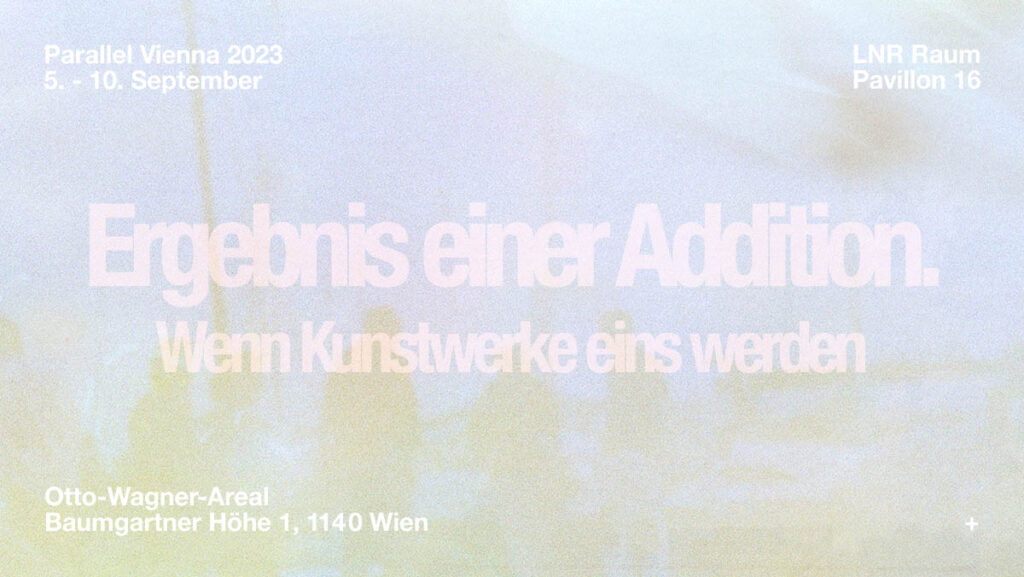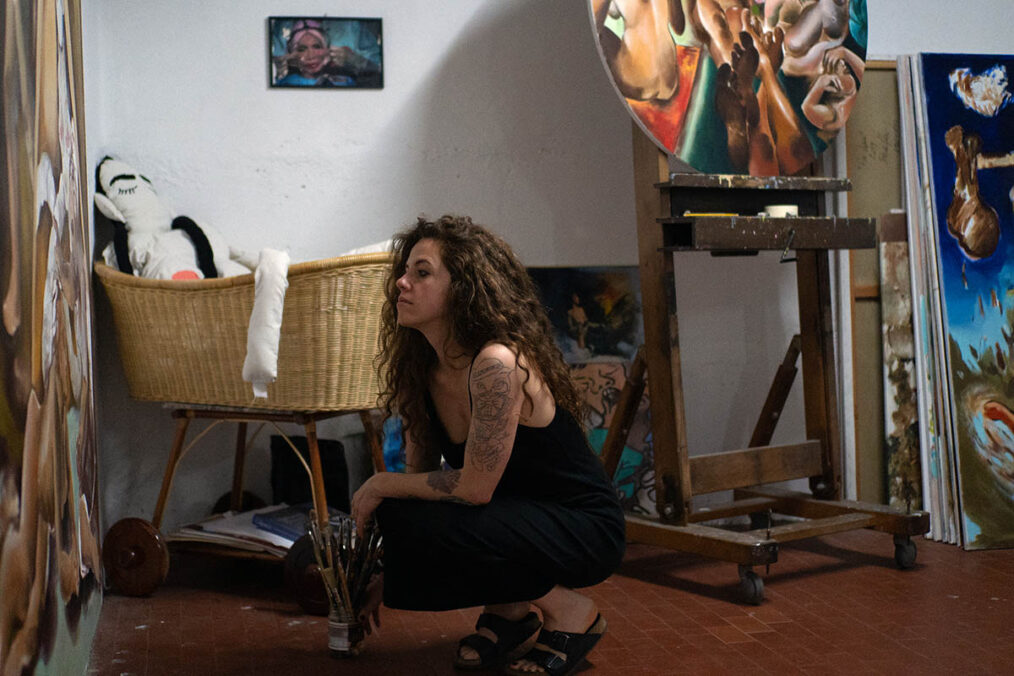
Where are you spending these summer days?
At the moment I am in Tuscany at my parent’s house. In this place, life flows slowly, I walk a lot, draw, and read books.
Tell us something about your path. You can start even from very early memories.
I don’t remember that much from when I was little. But I do remember that my father was an art lover and especially during that time he was really into Japanese comics. He used to buy tons of them and share them with me. It was an exciting moment, I started to discover a new exciting world where I could lose myself, forgetting about the existence of time and space. Then I started to feel the desire to understand how they were made and I started copying them. That was my first attempt at drawing.
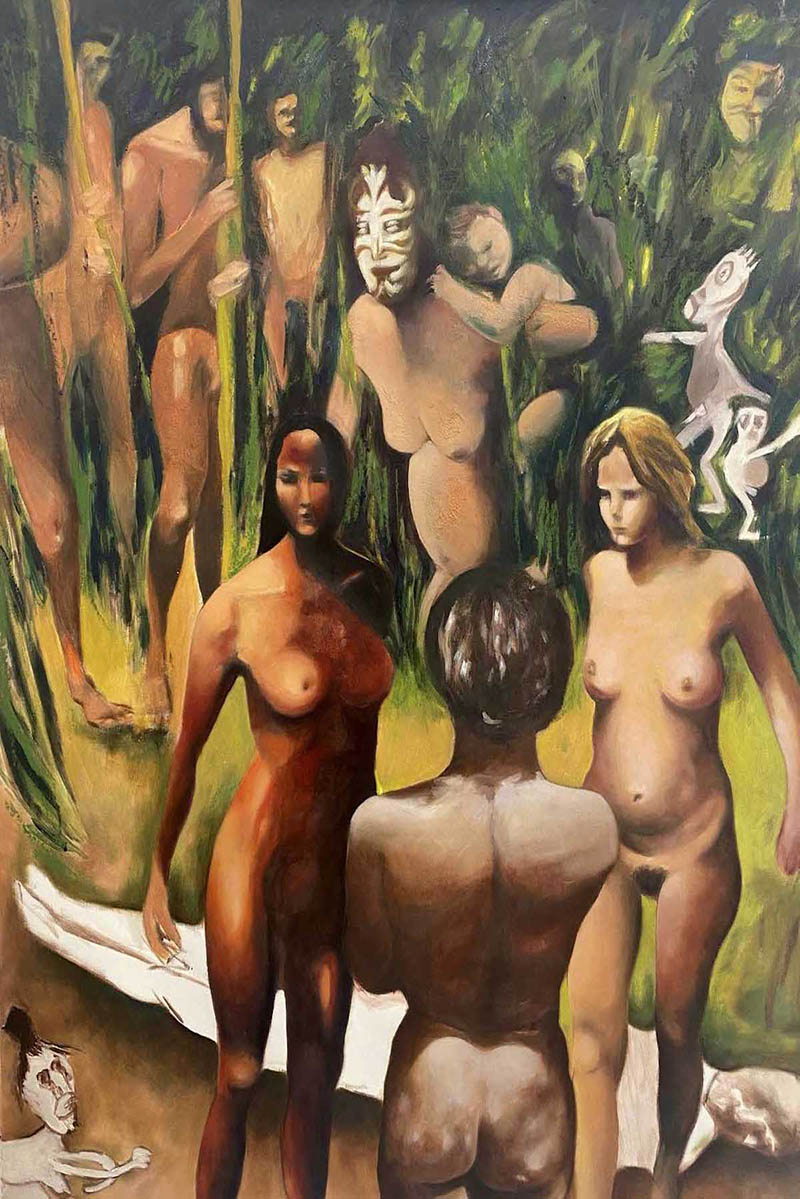
How do your paintings emerge Silvia?
Usually, I start with a fascination for a story, a word, or a rhyme. I love fairytales and popular novels from different countries. Some are handed down orally. Usually, these stories are about human beings and they connect with my experience as well. I see fairy tales as a bridge between the past and the present, the individual and the universal. The fairytale is a way to exorcise and make the story ambiguous and not easily readable. Practically I start doing some ink sketches on paper, I love this material and the freshness that it has. Then I move on a canvas and draw the composition directly with oil paint, I already have an idea in my mind but some figures or gestures appear by themself and I find them useful. I try to stay open and trust the process until I find a rhythm within the work.
I have the feeling that in your painting, the characters are seldom alone, they are whether with a second one or in groups. Others surround them, humans and not humans, architectures, while I write this, I have in front of me „Loth e le sue figlie“, „La parabola dei ciechi“, „Il sacrificio“. How do you see it?
Working with a story sometimes means that I have to deal with a lot of characters. The subjects are human beings with animal characteristics, or they wear weird objects that I specifically design for all of them. I sew these objects and ask my friends to wear them, or I sew puppets and dolls that become my models. These characters add a grotesque feeling to the scene and make some composition wired.
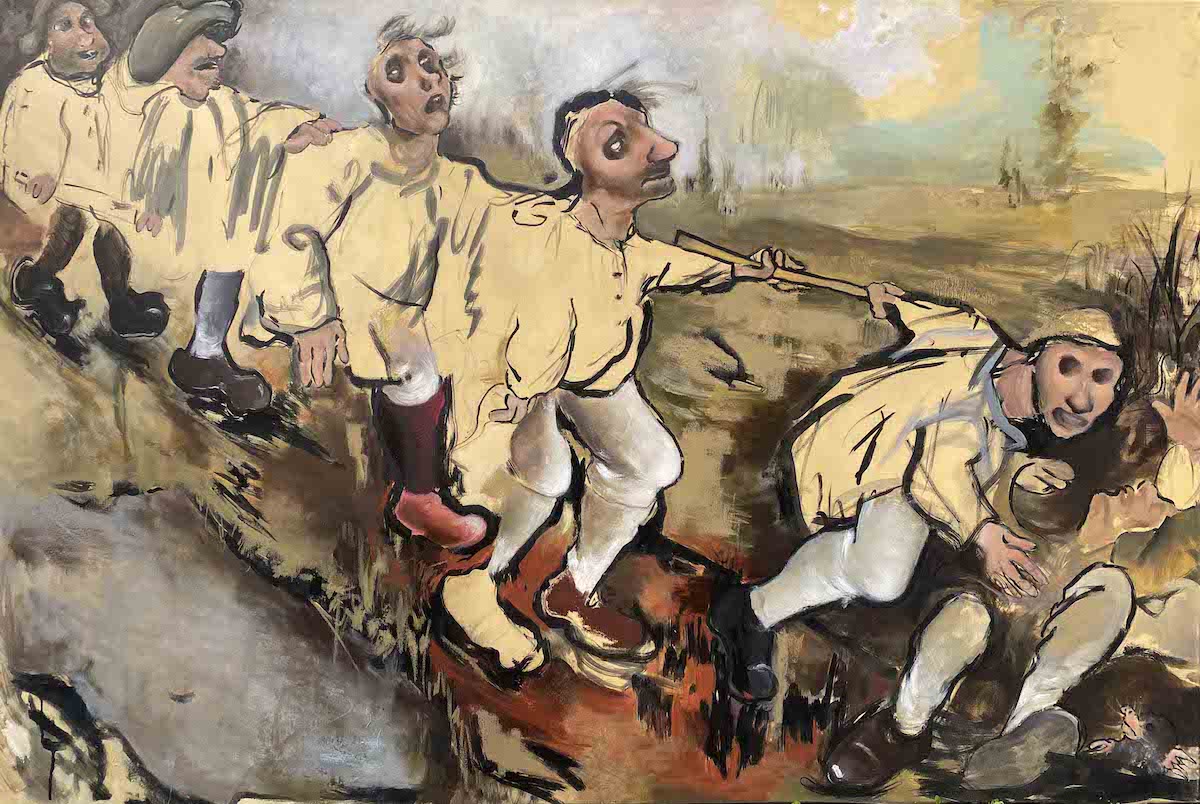
I also find it interesting to use them when I want to paint a particularly violent scene, another point of view on something that maybe we are used to see and doesn’t touch us anymore. For the work „Loth e le sue figlie“ I took inspiration from a biblical scene focusing on betrayal. During the escape from Sodoma, Lot offers his daughters to a Sodomite mob; after that, his daughters have sex with Lot without his knowledge to bear him children. I like to add some „funny“ character to the story. In this case there is an old woman on the top of the painting that while is escaping try to fight using pans and pots. Humour and tragedy. The work „La parabola dei ciechi“ it’s a warning about not making the same mistakes over and over. The metaphor of being blind reflects the human condition, we fall again and again and again one over another one. The funny element, in this case is the mole. „Il Sacrificio“ questions about different dimensions. Sacred and profane. Objects, food or animals are removed from the profane condition and consigned to the sacred, thus being dedicated in favour of one or more superhuman entities, as a propitiatory or adoration act.
How has evolved your painting through the years?
I think that the way I paint has changed a lot during the last two years. At the moment, I find really important the drawing part. I believe that this step has brought a lot of variation in the movement and the rhythm. I love to leave some parts where the drawing emerges, still visible. I work in a traditional way with oil colour mixing them, and I use a limited palette.
Where do you buy your working materials, and how will you describe the atmosphere there?
At the moment, I buy almost everything online! But I can tell you that there are two amazing shops in Florence where you can jump back in the past and feel like you are inside a real „bottega“. Their names are „ZECCHI“ and „RIGACCI“. A must-visit!
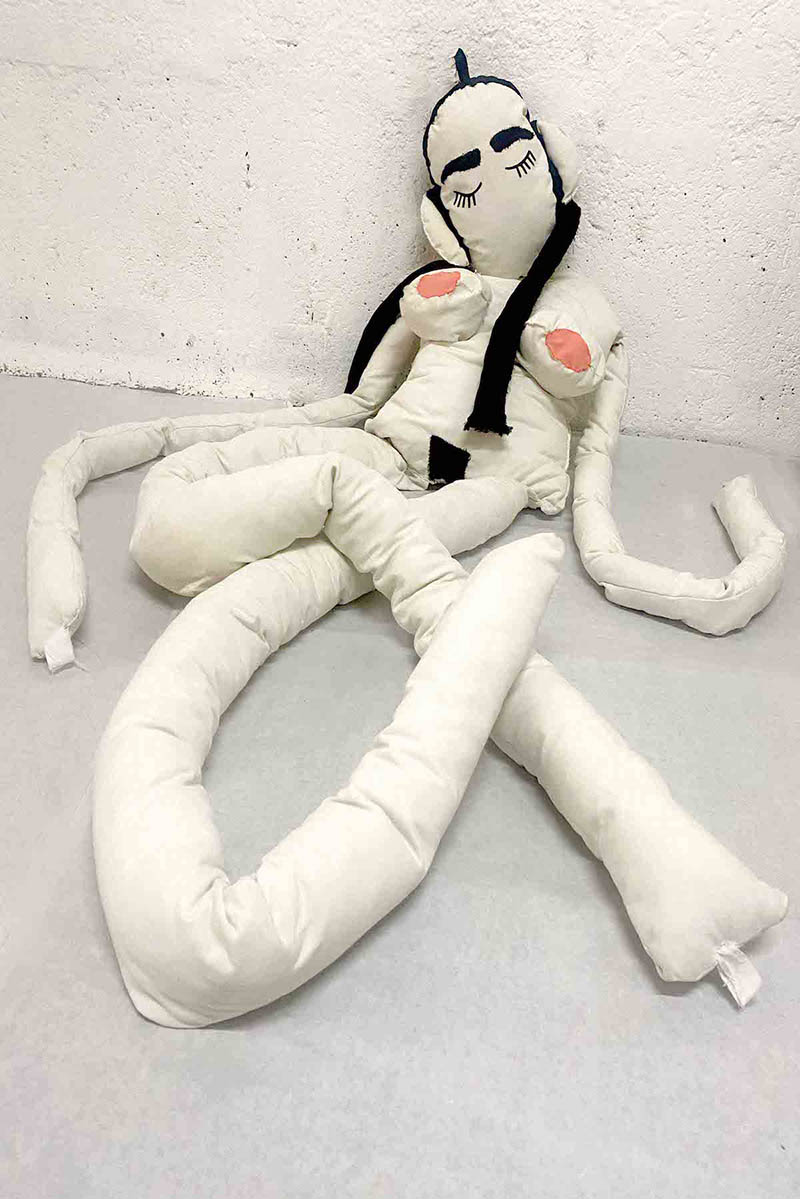
A painter friend of mine has been the one arising interest in your work. That time he started to describe to me his visit on your atelier. Tell us something about this place.
My atelier is situated in a really green and quiet area in the centre of Milan and is also the place where I live. I spend most of my time here and I love it. I try to divide myself between teaching some private courses and working on my own stuff. I share it with my boyfriend who is also a painter and sculptor and we love gathering at evenings with other colleagues and friends.
If you could suspend your life as it is now, have a completely different experience, and then come back into now as if nothing happened, what would you choose?
I think that I would like to travel, not necessarily with a goal or place, just enjoying the moment and leaving the present. I would like to discover new places, taste new food and meet new people without warring about material stuff. Perhaps it is even possible.
Silvia Paci – www.silviapaci.com
Silvia Paci was born in Prato in 1990. She finished the Florence Academy of Fine Arts, works and lives in Milan.




